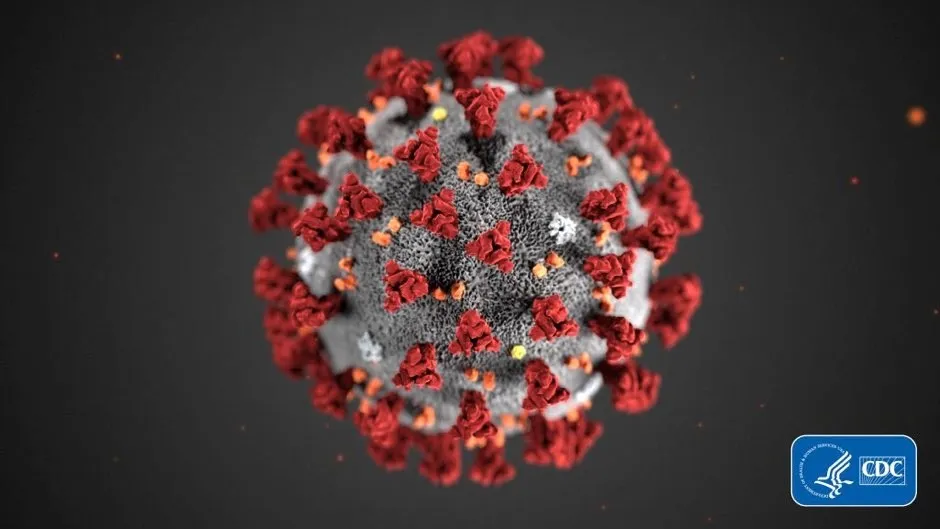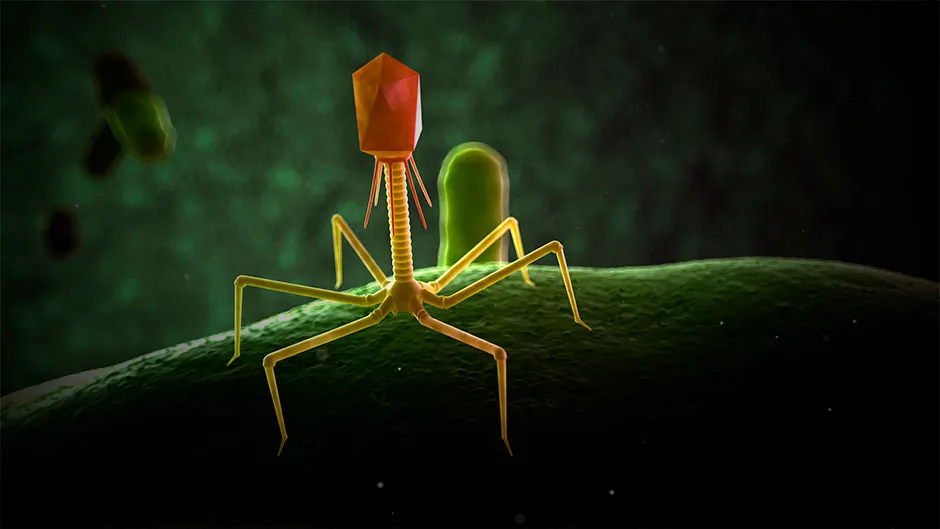You’ve probably heard of the human microbiome, the collection of microorganisms such as bacteria and fungi with which we share our body – including both the skin and gut microbiome. But how much do you know about the ‘virome’? It is the sum of all the viruses within our body, found in every tissue from our blood to our brains, and even interwoven into the genetic code within our cells.
Viruses are the most numerous organisms on earth. While we are thought to have roughly the same number of bacterial cells as human cells in our body (around 37 trillion), we probably have at least 10 times as many virus particles again. Many of these viruses are involved in essential bodily processes, forming part of our inner ecosystem. It’s probably safe to say we couldn’t survive for long if they all disappeared.
Yet, we still have a long way to go before we get close to understanding what most of these viruses do exactly, or in fact what even most of them are. It has been estimated that the field of virology so far has only explored around 1 per cent of viral diversity in existence.
Most viruses remain undiscovered, referred to by some scientists as ‘viral dark matter’. Despite this, they occur through all parts of our body. A study led by Dr Kei Sato from the University of Tokyo published in June 2020 found viruses in human tissues including the brain, blood, kidney and liver.
Sato’s team wanted to quantify these viruses to create a viral ‘atlas’ of human tissue. They did this by cross-referencing RNA sequence data against existing libraries of viral genomes, but this meant that they could only account for the handful of well-known viruses that were already in those libraries.
Read more about viruses:
- Meet the scientist who defeated 'the world's worst bacteria' to save her husband’s life
- Would Spanish flu be as deadly if it occurred today?
Sato says this means there is currently a bias to searching for known viruses that are mostly harmful, ones known as ‘pathogenic’. He explains: “In addition to the biases in our genetic reference libraries, it is difficult to collect samples in healthy tissues beyond the gut, which means we may be missing many harmless or even potentially beneficial viruses.”
It’s easy to think of viruses as malicious foreign intruders. After making contact with a human cell’s surface, a virus injects its DNA or RNA code, hijacking the cell’s machinery, effectively turning it into a factory to make new viruses.
If you picture a virus now, you might imagine their spaceship-like protein shell, called the ‘capsid’, which they use to transport themselves between cells. You might see the coronavirus responsible for the COVID-19 pandemic, SARS-CoV-2, with its ‘crown’ of spikes covering the capsid surface.
Yet, viruses are not so alien as they might appear.
The term ‘virus’ actually describes entities with very diverse attributes. As Professor Frederic Bushman, a world expert on the human microbiome from the University of Pennsylvania, states: “Sometimes our words for things in the world don’t actually match what’s there.”
For example, viruses can be transmitted by a very wide range of mechanisms. For some, called endogenous retroviruses, viral DNA passes directly between human cells because they are integrated into chromosomes. In fact, 8 per cent of our human genome is composed of these endogenous retroviruses.

Only a small fraction – less than 2 per cent – of our DNA codes for the direct production of protein molecules (in a process known as transcription), and biologists used to think the rest was non-functional – some even termed it ‘junk DNA’. Now, lots of this DNA is thought to be derived from previous virus insertions and we have discovered that it is highly important for regulating the transcription of other genes.
Some virus genes do occur in human DNA regions that produce essential proteins. Over evolutionary history, these genes have been co-opted for the essential functioning of our bodies, so whether we should call them human or viral genes is unclear.
A gene used in the development of the human placenta is borrowed from an endogenous retrovirus where it first evolved to make proteins that fuse host cells together. Through our evolutionary past, this process of gene-harvesting from across the tree of life seems to have occurred many times. It has been suggested that around 145 of our 20,000 genes have arisen from such horizontal gene transfer.
By transferring genetic molecules between different species in this way, viruses effectively tie together the evolutionary tree into a tangled network.
Yet, viruses often get a bad press, because the well-publicised ones have harmful effects causing diseases such as AIDS, Ebola, chickenpox and of course COVID-19. We actually have very little understanding of how most viruses affect humans.
There could be over 320,000 different viruses that infect mammalsout there, many of which are harmless, whilst some might actually provide benefits to us.
For example, some viruses called bacteriophages attack bacteria in our bodies and so have a crucial role in regulating our microbiome. Just as an invasive wild animal species can breed out of control when it enters a new area without predators or pathogens (think cane toads in Australia, or rats on tropical islands), so too would bacteria override our bodies without these regulating mechanisms.

Viruses also seem to be important in the regulation of our immune system. In humans, the hepatitis G virus can protect against HIV, while in mice herpesvirus is known to reduce autoimmune diseases. These are diseases that are a major factor in many modern illnesses in humans, from asthma to irritable bowel syndrome.
So, many researchers suspect that viruses have an important role in maintaining ‘immune tone’ in humans (i.e. a healthy immune system ready to respond to pathogens that is not over- or under-active), even though the identity and role of specific viruses is poorly known.
None of this is to deny the harmful effects of some viruses and the devastating personal impacts they can have on people’s lives. Many viruses are clearly very harmful to us and humans have evolved mechanisms to counter their attacks. Bushman’s team showed in April 2020 that breastfeeding reduces the incidence of potentially pathogenic viruses that grow on human cells in the infant gut.
In its entirety, the human virome is neither ‘good’ nor ‘bad’ – it is simply an ancient part of us. Viruses share a deep evolutionary relationship with animals and plants. Every cell in your body is part of an unbroken chain of life that has extended over 3.8 billion years. Viruses have been an important part of that evolutionary waltz from the very start.
The more we learn about the virome, the more we come to see how some aspects are essential for a healthy life. So, expect a coming revolution in how we conceive of viruses.
Read more about viruses and the human body:
Remember, we used to view all bacteria as dangerous ‘germs’, until we eventually gained a more nuanced understanding of how they underpin our health: disruption of the bacterial microbiome is now implicated in a wide range of diseases, such as Crohn’s disease, irritable bowel syndrome, type 2 diabetes and even mental health disorders such as depression.
We are walking ecosystems – chimeras of animal cells, viruses, bacteria, fungi and others, and maintaining the balance of these ecosystems is vital to our wellbeing.
We’ve yet to understand exactly how our human virome works, but disruptions to it may have unanticipated consequences. Social distancing and the widespread use of virucidal chemicals – both spraying of public places and hand sanitising to reduce viral transmission – has been a crucial element in the fight against the current COVID-19 pandemic.
These lifestyle changes and others, such as how our diets shift and how we interact with other people, will likely transform our virome. As Sato concludes: “In the current COVID-19 pandemic many people see viruses simply as ‘the enemy’, but we need to better understand the possible health-promoting aspects of our human virome.”
The pace of new discoveries in virology is dazzling, so be prepared for many more exciting discoveries that bring to light the secret ecology of our inner world.
The Self Delusion by Tom Oliver is out now (£10, Weidenfeld & Nicolson).
- Buy nowfrom Amazon UK, Waterstones or Bookshop.org